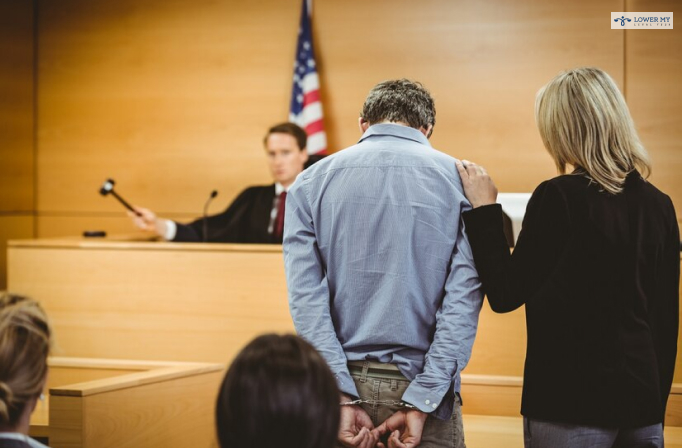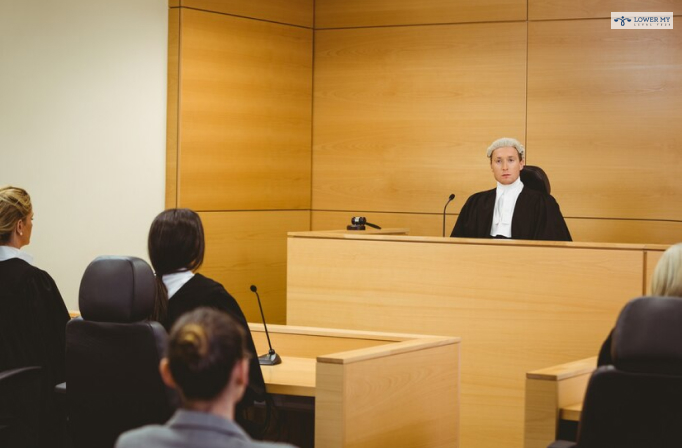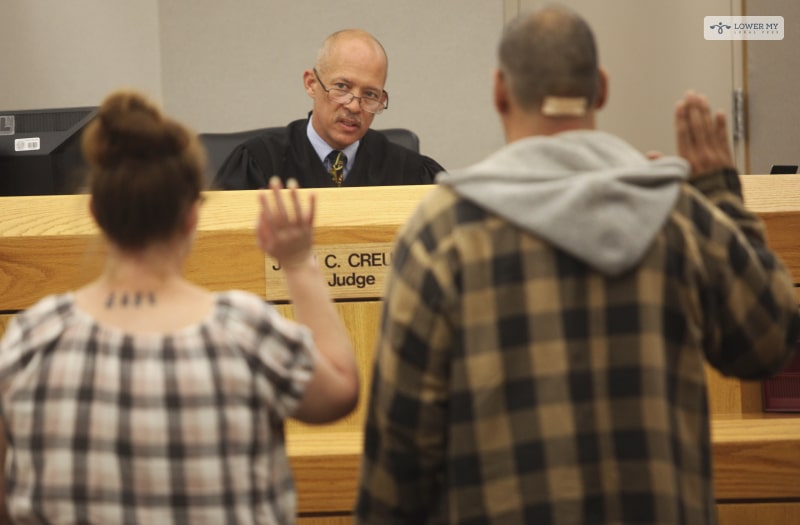An arraignment hearing is an essential event in the criminal justice system. It is the first formal appearance before a judge. It is also marked as a legal action that has started against you. At the arraignment hearing, the charges against you will be read aloud, and you will be asked to plead guilty or not guilty. The case is equally important because it allows you to see what charges you are facing. In this article, we will discuss an arraignment hearing and how the whole process unfolds within the legal system.
What Is An Arraignment Hearing?

An arraignment is a courtroom method in which the defendant examines the charges within the indictment. Along with this, they are additionally requested to enter into a plea. The arraignment hearing occurs after the defendant has been arrested and formal charges have been levied.
Understanding Arraignment Hearing in Civil Cases

Court instances generally pass through stages earlier than they’re closed or disregarded. In civil cases, the primary degree involves the plaintiff submitting a criticism. This follows with the court docket outlining the plaintiff’s claims.
Moreover, the defendant receives a copy of the grievance and a notice to see in court. Similarly, throughout this stage, the plaintiff and defendant can settle the case outside the court. In this manner, each party can settle its case using an alternative dispute resolution (ADR) mechanism. This ensures each party can shop for costs before going into trial. Moreover, the court can also provide a precis judgment.
Additionally, if the case goes to trial, the judge will make sure to levy a verdict, and either of the events to the suit may be picked out to enhance the court’s decision.
Arraignment Hearing in Criminal Cases

Criminal cases tend to follow a different route compared to civil cases. Criminal cases start with an indictment, the formal notice of charges. The next stage is where the defendant is charged and arrested.
Moreover, the defendant is brought before the judge and informed of the charges. This is referred to as the arraignment. Generally, the defendant gets themselves present in the arraignment in person. But, in cases where the punishment would be acceptable or imprisonment for less than a year, the defendant is not mandated to be present in the hearing.
In the US, the Federal Rules of Criminal Procedure require an arraignment to be conducted in an open court. Here, the defendant is given a copy of the indictment, read to them, and asked to plead guilty or not guilty of the charges.
Arraignment hearings tend to occur quickly once the defendant has been arrested. Similarly, the defendant will generally remain in custody for 48 to 72 hours before the arraignment hearing. However, the time might vary between state and federal courts.
The US Constitution’s Sixth Amendment allows defendants to be “informed of the nature and cause of accusation.” however, it doesn’t mandate the defendant to be notified during the arraignment stage.
More about Arraignment
The arraignment also offers the defendant to have the opportunity to plead for bail. The choice might permit the defendant to be released on bail till the entire trial technique begins. Moreover, before the bail has been granted, the decision shall evaluate the defendant’s heritage. This will include their criminal history and identifying whether the defendant’s discharge will impose danger. Similarly, if the defendant has been denied bail or has no charge to publish the bail, they will be held in custody.
In an incident in 2011, America filed expenses in opposition to Rajat Gupta, managing director at McKinsey & Company. These charges were related to a previous civil case the SEC filed regarding insider trading activities.
In the civil case, Rajat was found to have provided insider information to his friend and hedge fund manager Raj Rajaratnam. Moreover, during the arraignment, Rajat pled not guilty to the charges, leading to the grant of bail. Similarly, the bail was set at $10 million. The trial started in May 2012, and the jury found him guilty in June 2012.
What happens at the Arraignment Hearing?

In both federal and state courts, the initial court appearance is generally the stage where the court advises the defendant of the charges and particular constitutional rights. This also includes the right to counsel.
These are the various circumstances that occur during the arraignment:
- Inquiring whether the defendant has plans to hire a legal counsel or use a public defender,
- Taking the defendant’s plea,
- Determining whether to set bail and in what amount, including whether to release the defendant,
- Establishment of conditions for the release of the defendant’s pending resolution of the case,
- Setting of dates for further proceedings for the preliminary hearing.
Some states in the United States combine probable cause determinations with arraignment. Similarly, a probable cause hearing is generally a judicial check on law enforcement’s capacity to keep the suspect in custody.
Similarly, if the court has not found any probable cause for believing the defendant committed the crime, a rare occurrence, it is mandated to release the defendant.
State Variations in the Arraignment Hearing

In the United States,’ the arraignment hearing is an essential stage in the criminal justice process where the suspect is officially notified of the charges against them and asked to enter a plea. While the universal procedures of arraignment are uniform across the country, there are variations in how this process is conducted at the state level.
One variation is in the timing of the arraignment hearing. In some states, arraignment must occur within an appropriate timeframe after the arrest,’ often within 48 to 72 hours.
However, other states may have allowed for more traceableness in scheduling the arraignment, depending on factors such as the severity of the charges and the accessibility of court resources. Additionally, the mode in which arraignment hearings were conducted can vary from state to state.
Some states run arraignments in open court, where the suspect appears before a judge, inboards their lawyer, and reads the charges aloud. In contrast, other states may have allowed for arraignment to be conducted remotely via video or teleconference, particularly in cases where the suspect is sterile enough to see in person.
Furthermore, variations may have existed in the procedures for setting bail or releasing the suspect pending trial. Some states have guidelines for determining bail amounts based on the reliability of the charges and the suspect’s criminal history, while others grant judges more caution in making bail decisions.
Overall, while the aim of the arraignment hearing is stiff and uniform across the United States, variations in state laws and procedures could affect how this critical stage of the criminal justice process was carried out.
What Happens After an Arraignment Hearing?

After an arraignment hearing, several proceedings may follow, depending on the circumstances of the case:
Plea Bargaining
Following the arraignment, the prosecution and defense can also negotiate plea bargaining to reach a collectively perfect decision without going to trial. This should contain the defendant pleading responsible to lesser charges in the alternative to a reduced sentence.
Pretrial Motions
Either party may additionally record pretrial motions, looking for numerous criminal rulings or challenges to prove or process. These may include motions to suppress evidence acquired unlawfully or dismiss the case for lack of all probable cause.
Discovery
The prosecution and defense may interact in discovery, changing proof and facts relevant to the case. This method permits each party to gather data and assemble their arguments for trial.
Pretrial Conferences
The court may also schedule pretrial meetings to discuss case management issues, such as scheduling trial dates, addressing outstanding motions, or exploring the possibility of agreement.
Trial
If the case proceeds to trial, both aspects present their evidence and arguments before a jury, which will then determine the defendant’s guilt or innocence.
Sentencing
Suppose the defendant is found guilty at trial or chooses to plead guilty. In that case, the courtroom will schedule a sentencing hearing wherein the decision will impose a sentence based on the relevant legal guidelines and sentencing recommendations.
Appeals
Following a conviction, the defendant may additionally be able to attract the verdict or sentence. This is from a higher court if they trust errors were made throughout the trial or sentencing court cases.
The lawsuits following an arraignment are critical stages within the criminal justice process. The events work to clear up the case via negotiation, evidentiary hearings, or trial, ultimately, to the very last disposition of the charge.
Final Thoughts
Now you have a fair idea about the arraignment hearing held within the criminal justice system. Make sure you take advice from an experienced legal counsel. This is to have a better understanding of the way an arraignment goes on within the court system. Stay safe and comply with your state’s law to avoid such criminal trials.
Read Also:






